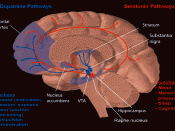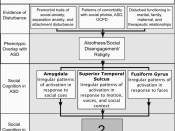February 8, 2010Sports and exercise are part of a balanced, healthy lifestyle. People who participate in sports gain more than just the excitement of competition. Improved health and fitness, increased self-esteem and self-confidence are some of the many benefits sports can provide for those who are involved. However, some people specifically women, find themselves not balancing the needs of their bodies and their sports, making them more vulnerable at becoming victims of what is called the Female Athlete Triad. There has been a great increase of women and young girls in the athletic world and these young female athletes are aggressive, competitive, determined and serious about their respected sport. With the increase in female participation in sports, the incidence of a triad of disorders particular to women has also increased.
The Female Athlete Triad is "a condition of three interrelated disorders: abnormal eating patterns (and excessive exercising) followed by lack of menstrual periods (amenorrhea) and decreased bone density (premature osteoporosis)" (Insel and Roth, 419).
It is a combination of three conditions in which the word triad comes in. "The combination of these three conditions, disordered eating, amenorrhea, and osteoporosis are associated with extreme athletic training" (Hobart and Smucker, 2000). According to the Female Athlete Triad and Statistics, the triad condition was born out of increased observed patterns of performances and injuries in certain sports involving female athletes. According to Laura M. Gottschlich, an Assistant Professor of Family and Community Medicine, "The female athlete triad is more common in the athletic population, but it can also occur in the non-athletic population."The first factor of this triad is called Disordered Eating or Eating Disorders. Eating Disorder is defined as "conditions in which a person's eating behaviors and food habits are so unbalanced that they cause physical and emotional problems' (Isenberg, 2000).



On Topic, Good Essay Overall
good essay on a topic i have never seen addressed before.
0 out of 0 people found this comment useful.